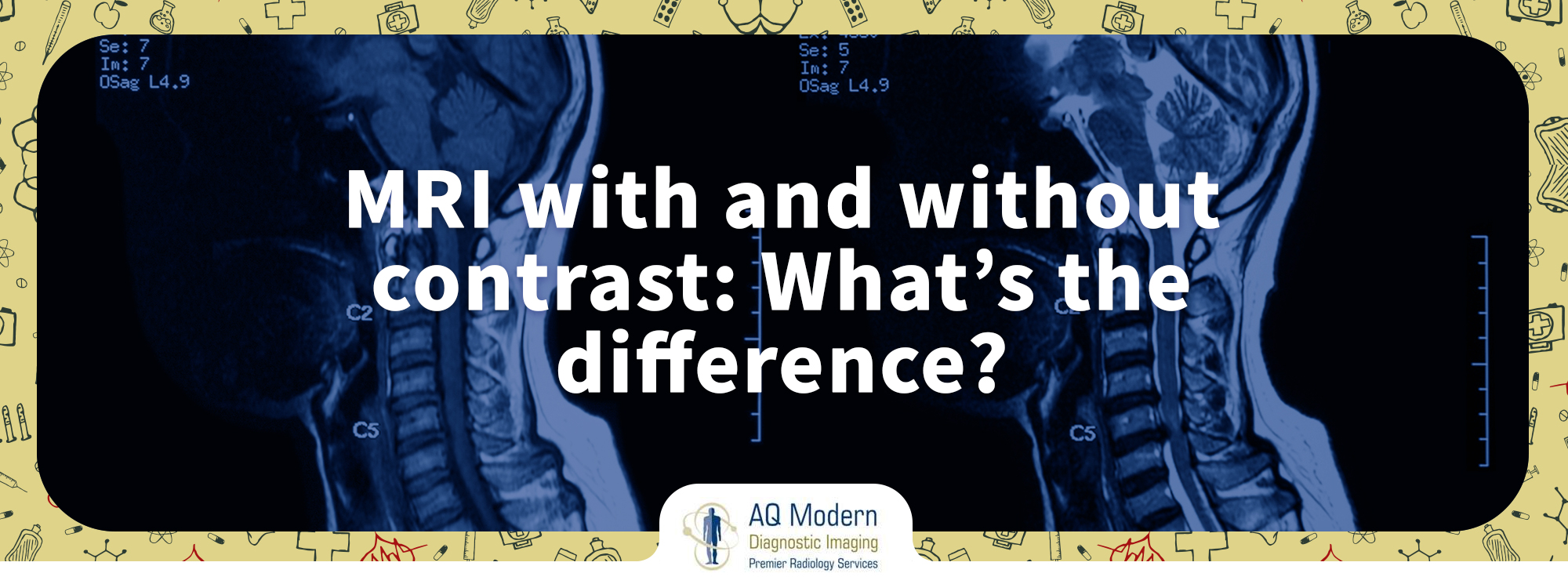When Doctore suggests MRI with and without contrast then there is confusion between both of them With the improvements in medical imaging technology and a growing prevalence globally, you may have grown more acquainted with magnetic resonance imaging (MRI) and the value it provides to health care.
You may be acquainted with an MRI machine as a huge, cylindrical piece of equipment creating a strong magnetic field around you.
It provides very comprehensive photographs of your body’s soft tissue to offer your doctor important diagnostic and prognosis information.
But, you may not be aware of the vital function contrast plays in an MRI. Gadolinium-based contrast agents (GBCAs), a kind of MRI dye, are used in MRIs to enhance the clarity and decipherability of your Magnetic resonance imaging picture compared to other imaging modalities.
Imaging facilities provide MRIs with and without contrast, and if you’d like to learn more about this technology, its applications, and its advantages, then read on.
What Is An MRI With And Without Contrast?
MRI imaging is divided into two categories: contrast-enhanced MRI and non-contrast MRI. Certain tissues can be readily seen throughout the imaging procedure due to a contrast agent.
MRI with Contrast
When you get an MRI with contrast, you are given an intravenous injection of gadolinium or iodine which is injected into your veins. It will enable your radiologist to report properly on how your body is operating to discover an irregularity or illness.
There is no difference between MRIs with and without contrast when it comes to diagnosing stroke. However, your physician can assess TIA, thrombosis, and venous insufficiency using a gadolinium-based agent. It’s possible to get more information from contrast MRIs than from non-contrast ones.
Contrast MRI scans comprehensively investigate possible medical diagnoses from contrast MRIs that include cancer, vascular malformations, pituitary illness, acoustic neuromas, central nervous system aneurysms, and seizure causes.
Also, Read More About: What is a Head MRI and its Purpose and Procedure?
Advantages:
It’s common for a doctor not to need repeat scans if the radiologist utilizes contrast during the first MRI. Contrast-enhancing MRIs are better at measuring and analyzing cancers. With the use of contrast,
radiologists can better identify tiny tumors and learn the exact position of the mass. Radiologists can better interpret MRI contrast scans because they are clearer and provide higher-quality pictures.
An MRI picture is made up of a range of grays, from white to black. To aid in detecting and evaluating particular tissues, the radiologist injects a gadolinium dye into your circulation. Hard bone and air don’t give out an MRI signal;
therefore, these regions appear practically black on the scan. Similarly, soft tissues and blood range in color from light to dark based on the amount of water and fat in your tissues as well as on the settings of the machine.
Therefore, it is possible to compare and contrast dark and bright regions on the scan to identify aberrant or healthy tissue.
During the scan, a contrast in your bloodstream makes the tissues of interest seem to be shining brilliant white, making their detection and evaluation easier and more accurate.
If you have a tumor in a key organ like your brain or central nervous system, contrast is essential to getting a clear picture of it.
Its dye is used to assist physicians spot tumors, identifying if they’re malignant or benign, and evaluating their development stage.
MRI without Contrast
MRIs without contrast is also useful for visualizing the body’s internal organs. Though it doesn’t employ contrast dye, it is still fairly precise.
Patients with poor renal function, who cannot undergo conventional MRI medical imaging due to their condition, are strongly advised to have non-contrast MRIs.
Pregnant women are typically encouraged to have non-contrast magnetic resonance imaging unless their doctor advises otherwise.
This is because gadolinium dye has been linked to elevated dangers for the fetus. Your medical provider should only recommend contrast magnetic resonance imaging during pregnancy if it is predicted to enhance fetal and maternal outcomes.
Non-contrast imaging is often preferred for most orthopedic examinations since the images are clearer when no contrast dye is used, which is advantageous.
Advantages:
In Contrast MRIs have certain safety risks for those who are allergic to the dye’s primary constituent. Gadolinium has the potential to cause an allergic response. One in 10,000 people has an adverse response to this injection
thus, it is quite improbable. Administer an EpiPen or medicine right away if you have an allergic response. Consult a doctor immediately if you have dizziness, shortness of breath, flushing, or redness after your contrast scan.
However, current research shows that non-contrast MRIs can monitor various disorders with advanced technology.
Difference between MRI with and without Contrast:
This section will go over the differences between them.
- A contrast MRI uses a contrast agent, while a non-contrast does not make use of one. Because of this, the latter may need extra follow-up tests to determine the nature of the anomalies.
- It is often simpler to interpret contrast MRIs than non-contrast MRIs, so they are commonly used.
- In Contrast, it can identify tiny cancers. They may provide the physician with more information on the size and location of the tumor and the presence of other tissues involved.
- Because of the better clarity of the resultant scan, when an MRI operation is performed with the assistance of a contrast agent, further procedures are rarely required. Some problems that non-contrast MRI does not resolve may need further treatments to resolve.
- It is necessary to do a contrast MRI to determine whether the patient’s tumor therapy is being carried out effectively. In general, without contrast cannot be used to assess the state of a tumor under consideration.An MRI image with contrast is more detailed than an MRI picture taken without contrast. Medical specialists can more easily examine and understand pictures obtained by MRI with contrast because of the great clarity with which they are obtained.

